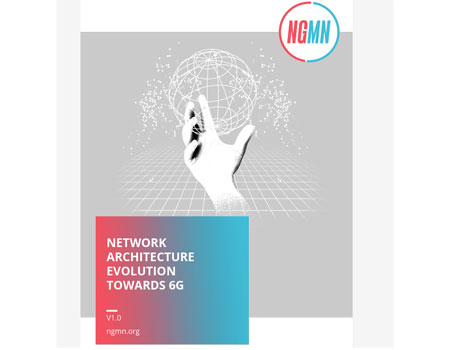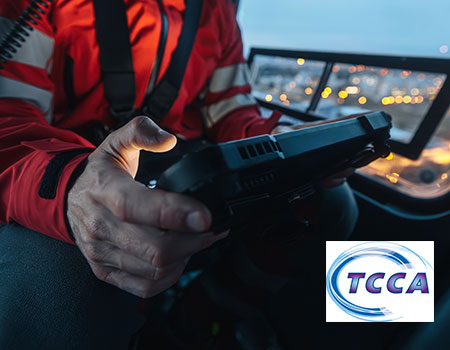RAN 5 and GCF ensure LTE interoperability
Apr 15,2011
The Global Certification Forum has approved the first LTE mobile devices, using 3GPP test cases, as a part of a process that ensures that tested equipment will interoperate successfully.
“The first device certifications for LTE, as for any new mobile technology, are a significant milestone.” said Adriana Nugter, Operations Manager of GCF.
A Global Certification Forum (GCF) press release - this week - emphasises the importance of standards, recognising the contribution they have made as “...some 400 different 3GPP mobile phones, wireless modems and connected devices achieved GCF Certification in 2010.”
3GPP RAN5 working group maintains very close relations with the GCF and the two groups have liaised on test prioritisation so that 3GPP could deliver urgent test cases to the GCF, then move on to the next most urgent set of test specifications. This prioritisation has been essential for 3GPP as RAN5 tackled around 600 Release 8 LTE test case specifications.
Phil Brown, 3GPP RAN 5 Chairman, says that the work needs to keep progressing, he attended the GCF CAG meeting in Taipei this week, from where he observed that “As the pool of Release 8 test cases widens and matures, organisations such as GCF will extend its certification scheme, keeping in step with the proliferation of more complex LTE devices.”
See the GCF Press Release at; www.globalcertificationforum.org
Some of the key RAN 5 Conformance specifications: Extracted from http://www.3gpp.org/ftp/Specs/html-info/TSG-WG--R5.htm.
Note: Specifications ending with -1 is the prose specification, -2 the applicability table, -3 the test suite (machine language/TTCN test suite).
a) Test Parameters:
b) RF radio frequency part
c) SIG signalling part
a) Test Parameters:
b) RF radio frequency part
c) SIG signalling part
“The first device certifications for LTE, as for any new mobile technology, are a significant milestone.” said Adriana Nugter, Operations Manager of GCF.
A Global Certification Forum (GCF) press release - this week - emphasises the importance of standards, recognising the contribution they have made as “...some 400 different 3GPP mobile phones, wireless modems and connected devices achieved GCF Certification in 2010.”
3GPP RAN5 working group maintains very close relations with the GCF and the two groups have liaised on test prioritisation so that 3GPP could deliver urgent test cases to the GCF, then move on to the next most urgent set of test specifications. This prioritisation has been essential for 3GPP as RAN5 tackled around 600 Release 8 LTE test case specifications.
Phil Brown, 3GPP RAN 5 Chairman, says that the work needs to keep progressing, he attended the GCF CAG meeting in Taipei this week, from where he observed that “As the pool of Release 8 test cases widens and matures, organisations such as GCF will extend its certification scheme, keeping in step with the proliferation of more complex LTE devices.”
See the GCF Press Release at; www.globalcertificationforum.org
- -------------------------
Further Reading
Further Reading
Some of the key RAN 5 Conformance specifications: Extracted from http://www.3gpp.org/ftp/Specs/html-info/TSG-WG--R5.htm.
Note: Specifications ending with -1 is the prose specification, -2 the applicability table, -3 the test suite (machine language/TTCN test suite).
LTE:
a) Test Parameters:
| TS 36.508 | Evolved Universal Terrestrial Radio Access (E-UTRA) and Evolved Packet Core (EPC); Common test environments for User Equipment (UE) conformance testing |
b) RF radio frequency part
| TS 36.521-1 | Evolved Universal Terrestrial Radio Access (E-UTRA); User Equipment (UE) conformance specification; Radio transmission and reception; Part 1: Conformance testing |
| TS 36.521-2 | Evolved Universal Terrestrial Radio Access (E-UTRA); User Equipment (UE) conformance specification; Radio transmission and reception; Part 2: Implementation Conformance Statement (ICS) |
| TS 36.521-3 | Evolved Universal Terrestrial Radio Access (E-UTRA); User Equipment (UE) conformance specification; Radio transmission and reception; Part 3: Radio Resource Management (RRM) conformance testing |
c) SIG signalling part
| TS 36.523-1 | Evolved Universal Terrestrial Radio Access (E-UTRA) and Evolved Packet Core (EPC); User Equipment (UE) conformance specification; Part 1: Protocol conformance specification |
| TS 36.523-2 | Evolved Universal Terrestrial Radio Access (E-UTRA) and Evolved Packet Core (EPC); User Equipment (UE) conformance specification; Part 2: Implementation Conformance Statement (ICS) proforma specification |
| TS 36.523-3 | Evolved Universal Terrestrial Radio Access (E-UTRA) and Evolved Packet Core (EPC); User Equipment (UE) conformance specification; Part 3: Test suites |
UTRAN:
a) Test Parameters:
| TS 34.108 | Common test environments for User Equipment (UE); Conformance testing |
b) RF radio frequency part
| TS 34.121-1 | User Equipment (UE) conformance specification; Radio transmission and reception (FDD); Part 1: Conformance specification |
| TS 34.121-2 | User Equipment (UE) conformance specification; Radio transmission and reception (FDD); Part 2: Implementation Conformance Statement (ICS) |
c) SIG signalling part
| TS 34.123-1 | User Equipment (UE) conformance specification; Part 1: Protocol conformance specification |
| TS 34.123-2 | User Equipment (UE) conformance specification; Part 2: Implementation conformance statement (ICS) proforma specification |
| TS 34.123-3 | User Equipment (UE) conformance specification; Part 3: Abstract test suites (ATSs) |
IMS:
| TS 34.229-1 | Internet Protocol (IP) multimedia call control protocol based on Session Initiation Protocol (SIP) and Session Description Protocol (SDP); User Equipment (UE) conformance specification; Part 1: Protocol conformance specification |
| TS 34.229-2 | Internet Protocol (IP) multimedia call control protocol based on Session Initiation Protocol (SIP) and Session Description Protocol (SDP); User Equipment (UE) conformance specification; Part 2: Implementation Conformance Statement (ICS) specification |
| TS 34.229-3 | Internet Protocol (IP) multimedia call control protocol based on Session Initiation Protocol (SIP) and Session Description Protocol (SDP); User Equipment (UE) conformance specification; Part 3: Abstract test suite (ATS) |


 Partners News
Partners News 




